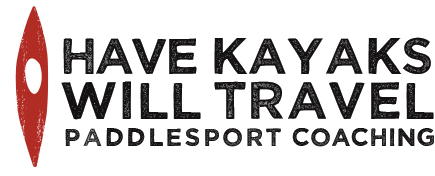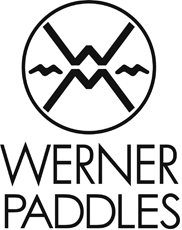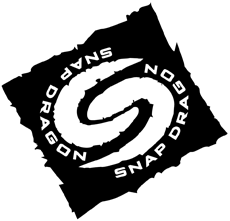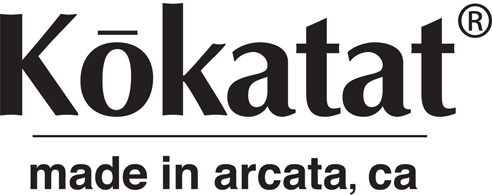Many paddlers make a false distinction between flat-water and rough-water skills. They practice maneuvers in calm conditions that would never work in dynamic water, thinking they will learn “advanced” skills for more challenging conditions. Dave Olson puts boat handling skills and timing to the test. This past weekend at The Gales Storm Gathering, participants discovered that there are no such things as advanced skills. There are simply solid skills applied to advanced conditions. Leon applies his tidal race skills to the Menomenee currents. The wind, waves, current and rocks put everything to the test. If a rescuer didn’t hold on tight to a swimmer’s boat, the wind swept it away. If a bow rudder wasn’t effective, a rock was decorated with gel coat. Choosing the wrong edge in current led to immediate feedback from the river. Incident management has urgency if you are drifting towards rocks. As Shawna and Leon told us, a five-star paddler is just applying three-star skills in five-star...
The Gales Storm Gathering premiers
The view from Middle Island looking toward Marquette on a calm day. We just returned from the first annual Gales Storm Gathering, a Great Lakes rough-water symposium based this year in Marquette, Michigan. We write “based” and not “held” because while all the coaches and participants stayed in Marquette, class locations depended on conditions. One of the unique aspects of this symposium was the night-before planning: Depending on the forecast, classes would be offered on surfing, rough-water rescues, incident management, rock gardening, navigation, and long boats in current. Even the scenic tours offered opportunities to learn boat control in wind and waves. We expected rough water on Lake Superior in early October, but were instead treated to a classic Indian summer. The days were warm and sunny, and the winds generally light. The coaches scouted the two key locations: the nearby coast of Lake Superior, with its rocky islands and shoals, and a stretch of the Menominee River that offers current, eddies and rapids. Scouting the Menominee to find the right line. When the symposium began, the winds picked up, but they were off-shore instead of on-shore, creating no surf. So day one began with a drive through the Hiawatha National Forest–a visual feast of fall leaves–to Manistique, where Lake Michigan was delivering waves to five feet. A pre-surf session talk about launching and landing. Another unique aspect of this symposium was the ratio of instructors to students. With 12 instructors and 36 students, it was possible to safely take people out in dynamic conditions and keep class sizes small. This also meant that instructors and students got to know one another well over the course of the weekend, and everybody benefitted from working with guest coaches Shawna Franklin and Leon Somme of Body Boat Blade. Shawna debriefing with her class after an incident-management scenario. Even though we never got rough conditions on Lake Superior, the symposium managed to deliver on its promises, thanks to trips to Lake Michigan and the Menominee and creative use of rocky shorelines. It was a pleasure to work with participants who had substantial paddling skill and experience and were eager to be challenged and learn. Cliff jumping, kayaker style. This symposium will happen again next October, based in Wawa, Ontario–another place known for rough water in the fall, but that also has a river to ensure conditions no matter what Mother Nature delivers. We’re looking forward to it...
Paddling at night, inevitable and pleasurable
The days are getting shorter; sunset comes ever earlier. We’re bemoaning the loss, but we’re also taking advantage of the opportunity to do more night paddling long before bedtime. Paddling the Chicago River after dark. It’s beautiful. The streetlights and headlights are wistful; the building lights are lonely and lovely. People are working, commuting, eating, sleeping. And us? We get to paddle! Paddling on Lake Michigan, with the skyline in the distance. There’s a lot to learn at night, too. We’ve discovered that some running lights are brighter than others. (Our current favorite: the Kayalite.) We’ve discovered that the captains of the frightening Seadog speedboats are far more friendly and professional than we thought, and that hailing them on channel 16 is an effective way to let them know where we are and make sure we aren’t in their path. We’ve discovered that it’s hard to switch to the channel they suggest if your VHF radio doesn’t have an illuminated display. We’ve also discovered that afterwork paddles are a great opportunity to get out with friends who aren’t available on weekends. And paddling on Wednesday, in particular, is like a mini-weekend. Two days later, it’s the weekend...
A new waterproof camera for paddlers?
Paddlers always seem to be asking which waterproof camera to buy. That’s a symptom of two problems: we aren’t thrilled with the cameras we have, and they don’t hold up as well as we wish. Our main needs are high picture quality, video quality, water resistance and ruggedness. Shutter lag is a major drawback. So we were intrigued when Nikon announced last month the imminent release of a new point-and-shoot, waterproof digital camera, the Coolpix AW100. It’s not out yet, but the specs look attractive for paddlers. Nikon’s new entry into the waterproof camera market. We’re assuming that this camera is as waterproof as the others. It claims to be rugged enough to survive a five-foot drop; the recessed lens would certainly help if it face-planted when it fell, but a lens cover would have been a nice addition. If this camera uses some of the same internal processing as other Nikon cameras, the picture quality should be as good as the specs suggest. (For the full specs, click here.) The video offers full HD as well as slow motion (at reduced resolution), which should be great for technique analysis and revisiting that great ender in the surf. Normal video is 30 frames per second (FPS); the Coolpix can capture video at 60, 120 and 240 FPS. Shutter lag will still be an issue, but the burst mode allows you to capture three frames per second, giving you a better chance of catching the expression on someone’s face when he successfully rolls up. Since the camera isn’t out yet, we can’t talk to anyone who has tried it and can attest to its performance, but check out Digital Photography Review for an in-depth assessment of the information available. The comments at the end extend the discussion and provide additional information. Bottom line: This camera lists at $379, making it the most expensive point-and-shoot, waterproof digital camera. (DPR recently reviewed them here.) Our Pentax Optio W80s are still functioning after two years, in spite of our griping, but if we had to replace one of them, we’d be tempted to try out this new Coolpix. If anyone gets one and has a chance to try it out, please let us know what you...
If you are intimidated by rough water….
The Gales: A Storm Gathering will be a great place to learn or improve your rough-water paddling skills. Daybreak with waves. During one recent foray in Lake Michigan waves, a fellow coach and friend mused about how few paddlers go out on truly rough days. Are they intimidated, he wondered, or just uninterested? What would it take to bolster both their confidence and ability? One answer is the upcoming rough-water symposium, The Gales: A Storm Gathering, which will be held October 8 through 10 in Marquette, Michigan. Over the course of three days, there will be courses in surf kayaking, sea kayak surfing, rock gardering, rough water rescues, incident management, and open-water and night navigation, along with “long boats in current” classes on the nearby Menominee River. Registration is still open. Local accommodations are very affordable. So if the following images represent the kind of paddling you’d like to enjoy, sign up soon! Sharon gets ready to launch. Waves always look smaller from the shore. Learning to estimate wave height is a useful rough-water skill. Punching through the surf zone requires timing and technique. The same is true of surfing back in. Boat control in rough water is essential. Clapotis offers rough-water opportunities, too. We’ll be there, paddling and coaching. We hope to see you there,...
Paddle more, pack less
If you never unload the trunk, you’re always ready to...
A week of rough water on Lake Michigan
It has been an amazing week of rough water along the Chicago shoreline. Day after day of 25 to 30 knot winds out of the north and northeast have given us large waves, massive clapotis and loads of fun. Sharon, Bonnie and Scott playing in the clapotis near Foster Ave. beach. The key to having fun in conditions such as these is knowing your own ability and having friends who are skilled paddlers. We were fortunate this week to get out on our own and also with our paddling partners Scott Fairty, Aaron Litchfield and Bonnie Perry. Today, the wind had dropped. The forecast promised waves of 4 to 6 feet, but in fact the lake was much calmer. At first, we were disappointed; the lake looked relatively flat. Waves of 3 to 4 feet were still rolling into the beaches, but we felt let down. Still, there’s always fun to be had if you know where to look, so we set out for some areas where the waves reflect off of hard surfaces and create chaotic conditions. The lake was relatively calm, but the area near the break walls was rough enough. Here, Alec is practically airborne. Bonnie amid waves. Scott–or at least part of his boat. Sharon–or at least her helmet and paddle...
Marveling at Lake Michigan from the sky
Whenever we fly back to Chicago, we hope the descent will be over Lake Michigan. There’s something grounding — if you’ll excuse the pun — about returning to our home waters. I (Sharon) was fortunate yesterday. We approached at the southeast edge of the lake. I recognized the disfigurement caused by heavy industry to Indiana’s shoreline as we flew by. Then we were out over open water on a very windy day. Whitecaps dotted the lake and there were waves as far as the eye could see. We continued north, past the heart of the city, then turned east for our final descent. It’s hard to explain the thrill of seeing the lake from 20,000 or so feet when you’re accustomed to seeing it from two and a half. It’s huge, dignified, beautiful. I couldn’t wait to land and spend time on its surface once...
Something sad found floating in Lake Michigan
The other day, while paddling between the Wilson Avenue and Four-Mile water intake cribs (about four miles from shore), we saw something floating in the lake. From afar, it looked as though it might be a cushion. It turned out to be a dog, drowned and bloated. We paid our respects, took this photo, and paddled away feeling sad about the poor creature’s demise. What happened, we wondered. Did large storm waves wash it off a boat or a pier? Did it chase a stick into the lake and never return to shore? Does somebody realize what happened to it? Where will it wash ashore? Lake Michigan is large and surrounded by a huge shoreline. It shouldn’t surprise us that dogs, cats and even people drown and are found in the water or on the beaches. This poor fellow is hardly...
Warm water surfing in the Great Lakes
Paddling out through the surf zone. Last night, the kayaking listservs were abuzz about the building waves on Lake Michigan. Paddlers arranged to meet at 63rd Street Beach in Chicago, Portage Beach in Indiana, and the New Buffalo beach in Michigan to play in the waves. Forecasts varied, but most indicated waves up to 5 or 6 feet at the south end of the lake. We met our friends and fellow Geneva Kayak Center coaches Aaron Litchfield and Chris Hoffman at 63rd Street Beach on Chicago’s south side. The waves were three to five feet and nicely formed. The wind had dropped to 15 to 20 knots. Sharon catching a wave back in. Here on the Great Lakes, waves are created mainly by wind. Its strength, duration and fetch (distance it travels) determine the height of our waves. That means the ideal time to surf is immediately after the wind decreases but before the waves settle down. (You can learn a lot more about this at Go Kayak Now.) Today was made even more ideal by the warm water and bright sunlight. When the sky is overcast and the water is cold, everything feels more ominous and dangerous. Today, it was just pure fun. Alec, Aaron and Chris paddling out to catch another ride back to the beach. After a couple hours of riding waves toward the beach and paddling back out, we decided to explore the clapotis along the north side of the 57th Street Harbor break wall. Reflecting waves combined with incoming waves to create chaotic heaps of water. The four of us felt confident paddling in this area, since all of us are comfortable in pretty rough water, but it was not a place any of us would have gone alone or without other skilled paddlers. Clapotis near a break wall creates chaotic conditions. In fact, once you get comfortable with clapotis, you tend to find yourself seeking it out. Aaron and Alec playing in another area of clapotis south of the 63rd Street Harbor. It’s a treat to get some surf practice in summer. Soon the water will be cooler and the days shorter. We’ll still go out when the north winds blow, but we’ll be decked out in dry suits and toting hot tea. And in early October, when the surf season is in full swing, you’ll find us at The Gales: A Storm Gathering, a new symposium dedicated to rough water kayaking. This is great opportunity for anyone who wants to build skill and confidence in these kinds of...







